| |
"One of the best things about a magazine like Cinefantastique, for me, is the extent to which it serves as a time-capsule. There is a considerable amount of weight to time, when it comes to movies and books and television shows and popular music, and so forth; time itself isn't the weight, but instead the collective energies that go into our collective cultural opinions about the movie (or book, or what have you)." |
| |
|
One of the very few positives about downsizing is that you discover what's actually valuable to you. While I could and did happily burn two decades or more of back issues of Empire (too eager to be part of the club that they should be holding to account), there was one magazine that still shone brightly, one that championed journalistic integrity over public relations fluff and whenever possible pissed off the big boys and erected protective scaffolding around the less fortunate. Cinefantastique and I go way back and re-filing my back issues has reignited a dormant love affair that still surprises.
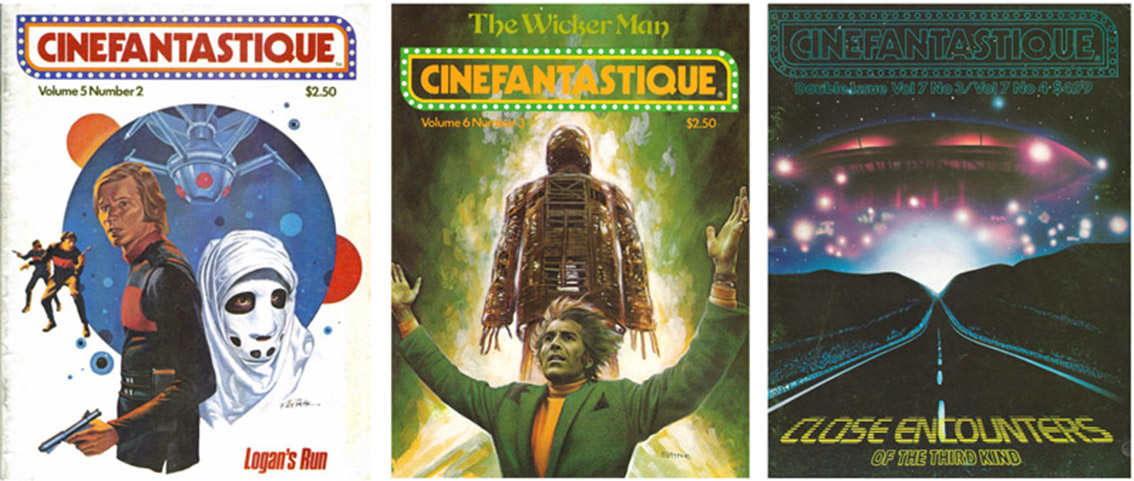
Love affairs need not involve two sentient, passionate people. You just have to have a 'Desired' and a 'Desiree'.** In the late 70s and early 80s, two magazines came to my rabid, film-hungry attention. Both were American and so therefore both were well beyond the grant pittance of a British student but, to be honest, both were oh, so desirable, I forwent my eating budget for three or four days just to own one. You have to remember (or be informed by someone who was there at the time) that during that period, film journalism was polarised between high and low brow with precious few titles covering the ground I was interested in – reviews and articles by writers who really cared about the movies they were writing about. It seemed that those toiling for the British Film Institute's Sight and Sound and its sister publication Monthly Film Bulletin didn't regard film in quite the same way as I did. Their writers (dogged by deference to a house style perhaps?) never came down on one side or another but expressed both their approval and haughty disdain in (granted) well-worded ways but these reviews hardly lit you up. Films and Filming was in the afore-mentioned BFI's flagship magazine's orbit while Film Review was nothing but a publicist's puff piece. Films Illustrated at that time was close to the niche now occupied by Total Film today. But there was something missing. Passion seemed to have got lost, trumped by the need for cleverness and respectability. I wanted a magazine that screamed opinions heady in the fever of adoration for its subject. No genre of film comes close to inspiring fervent worship more than science fiction and fantasy and no other genre depends on special effects as much to bring to life a writer's imagination.
One of these two highly desirable US imports was called Cinefex. Notable for its unique size, an almost square 9" by 8", it lovingly and exactingly covered the special effects of its chosen movie(s) with not a single critical or personal comment ("...just the facts, ma'am."). This was objective film journalism at the very top of its game. I was dying to know what editor Don Shay and his team actually thought about the films they were so enthusiastically covering. You could have the best special effects in the world and the movie might still blow goats. I know that's not a nice thing to say but as I'm not quite sure what blowing goats has to do with a lack of quality... answers on a postcard. Cinefex (still wonderful and still going strong) now releases all this pent up subjectivity in a Blog but that is still quite a recent development in the time frame of the magazine's existence.
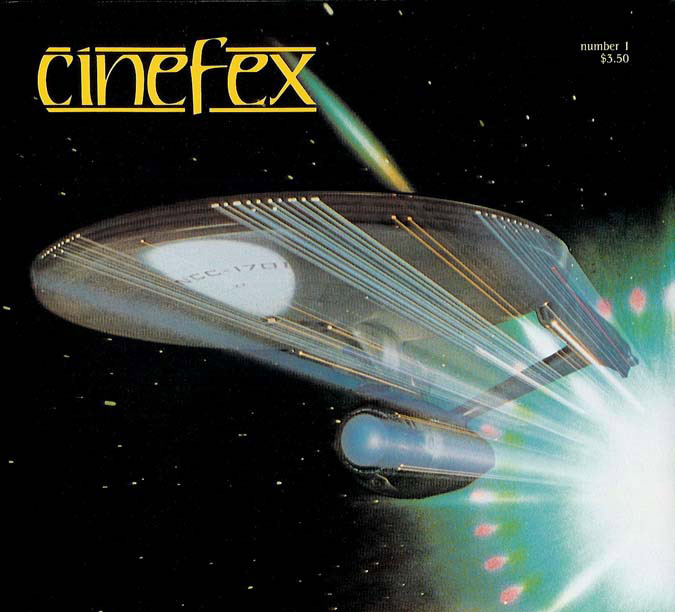
Its first issue covered Star Trek The Motion Picture and Alien and was dated March 1980. The Blog is only a few years old, having started in October 2013. Editor Don Shay cut his movie journalistic teeth on another magazine that started as a photocopied mimeograph in 1967. In 1970, that mimeograph finally could pass muster as a real magazine and Cinefantastique was born. Its own tagline stated its intentions and ambitions... 'The magazine with a "Sense of Wonder"'. Little did editor Frederick S. Clarke know that he was starting his great publishing project at exactly the right time. Science fiction and fantasy had been a relatively moribund genre for some years (plagued by low budget efforts and an air of silliness) despite the classics that Clarke had wanted to cover in some depth if the magazine managed to last that long. Just a few years away, a little, relatively obscure science fantasy would change cinema forever and Clarke's Cinefantastique would hold Star Wars accountable just as it would any other film. Clarke was nothing if not an equal opportunity critic. High or low budgets meant nothing to him and that no nonsense 'Sense of Wonder' philosophy percolated down through to his writers. As one time west coast editor of the magazine Steve Biodrowski says on the CFQ website in an article entitled 'The History of Cinefantastique Magazine' (which could do with a proof read)...
"During a decade when many mainstream critics were dismissing The Exoricst (sic) as sadistic pornography, and when Forest J Ackerman was filling Famous Monsters with puny puns (e.g., "A Clockwork Lemon," referring to a malfunctioning robot in Future World), publisher-editor Frederick S. Clarke created a little magazine with a big ambition: to cover the genre better than anybody, and to do it with all the seriousness of Cashier (sic) du Cinema, American Film, or Film Comment."
I couldn't resist re-quoting that second glorious typo (auto-correct needs to auto-destruct) and now am trying to imagine what an issue of Cashier du Cinema would actually consist of. Surely in-depth features on Jane Horrocks in Little Invoice, Bruce Willis in The Sixth Cents and the overheads in Close Bean Counters of the Deferred Kind. Apologies, I'll stop now. Don't get me started on the Bond movies... For the non-French speakers or non-cineastes, it's actually 'Cahiers du Cinema' without the 's' and I'm willing to bet Biodrowski knows this all too well). While Cinefantastique's journalistic standards were held higher than most (and yes, there are many in Hollywood who would and could legitimately cry foul), the actual practical magazine also looked wonderful. Its covers were personal spins on signed off studio photography via the talented artists Roger Stine and David Voigt and these covers gave the magazine a visual cachet that few other magazines, at first glance, could compete with. The glossy paper really singled it out and the artwork and layout just felt perfectly suited to its plethora of subjects.

Its masthead, a 50s cinema nod with light bulb graphics surrounding the typeface looked like nothing else in the newsagents at the time – not that you could find it in most newsagents. This was a specialty publication that was in many senses (particularly one of wonder) ahead of its time. You could only get hold of them at outlets such as Forbidden Planet (then a small caravan-sized shop in London's Soho) or Dark They Were And Golden Eyed (the best shop title ever, taken from a Ray Bradbury short story) and Bristol's Forever People. For a number of reasons, my far from complete collection takes absolute pride of place on my shelves. I display a reverence bordering on religious awe towards certain issues. These magazines provided me with what I could get nowhere else – detailed, in-depth (outrageously so) articles and criticism/support of films usually looked down upon by 'serious' critics. Special effects were also well covered. This is where the magazine overlapped with and complimented Cinefex and if any one thing typified Cinefantastique's legacy, it was the magazine's (for that, read Frederick S. Clarke's) stubborn contrariness. It championed little known box office losers simply because no one else was batting for them. It riled the oily slick PR companies representing the Hollywood big hitters because Clark always wanted to see what lurked under the carapace of power. He was the print medium's Harry Knowles (when Knowles was seen in a more relevant and flattering light), the go-to-guy for Hollywood insiders who wanted to spill some beans.
This crusading spirit got the magazine in hot water on several occasions, most notably its publishing of the major soap opera element reveal of The Empire Strikes Back. Many think, perhaps with good reason, that this was an epic spoiler that only proved Clarke could scoop with the best of them but in doing so significantly ruined one of Empire's principal pleasures. Clarke also regarded George Lucas as a flawed filmmaker with both eyes firmly on the merchandising. The rather odd 'diversion' of naming the third film in the franchise Revenge of the Jedi was seen as proof that the creator had not understood his own mythology. Clarke said that Jedis (Jedies? Jedi Knights?) were too civilized to take revenge. Lucas's spin was that this was a tactic to weed out the unscrupulous pirates who'd slap the movie title on anything and sell it. If it was a 'diversion', it seems odd that the first trailers went out with 'Revenge' still in place. I have a letter from Richard Marquand (the nominal director of Jedi) on 'Revenge' headed notepaper and if my possessions weren't so scattered all over the place because of a building project on hold due to rain, I'd scan it and show you. Trust me, the 'Lucas-had-it-all-planned' scenario breaks whenever any pressure is applied and Clarke loved to push.
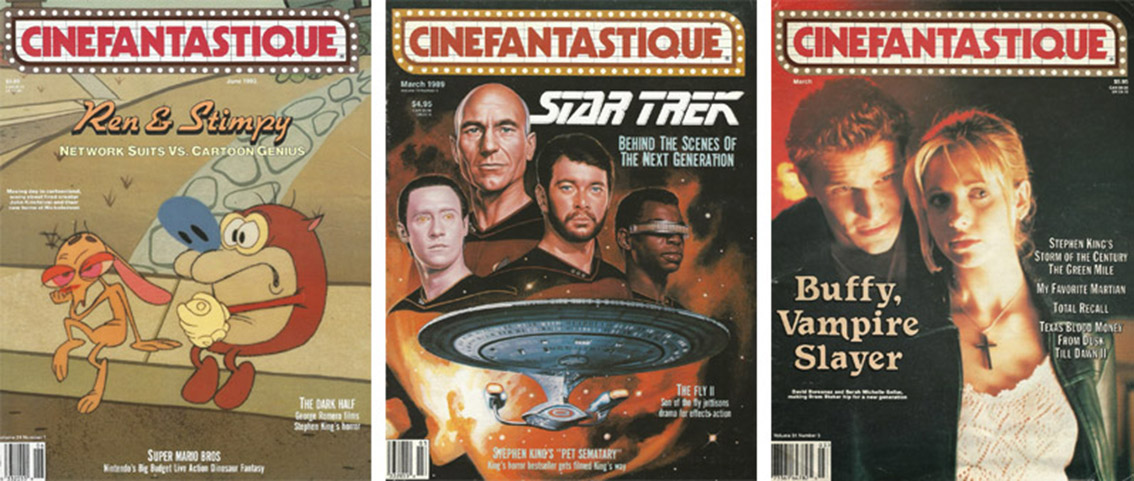
The magazine also pushed forward and hailed the outsiders. Clarke was well aware that the Star Trek covers sold a hell of a lot more issues that those boasting in-depth features on 50s science fiction movie posters or God forbid, extraordinary Nickleodeon cartoons but I would never have discovered John Kricfalusi's stunning Ren and Stimpy series without Cinefantastique. Its coverage of Star Trek and its many movie/TV offshoots was exhaustive and when it finally made its way to Buffy, I knew that this wonderful magazine was the prize truffle-sniffing pig in an otherwise mediocre farmyard. All that mattered to this magazine's sensibility was quality and intent. And Clarke, bless him, stuck to his guns. That may not be the most tasteful turn of phrase. Clarke was beset by depression and took his own life in 2000 at the age of 52. Despite the magazine's writers' enthusiasm, there's only so much the crew of the Enterprise can do bereft of their captain and although the print version limped on, it was never the same. I know that seems like the easiest way to lay blame and chose the pallbearers to carry the coffin but I think all enthusiasts of this fine magazine sensed the end was nigh once Clarke left the building.
Interim editor Dan Persons made a good fist of a losing hand and when Mark Altman took over, he gave the magazine a radical overhaul (he even renamed it 'CFQ'! Sacrilege!) Now the shadow of Clarke's extraordinary achievement lives online and I cannot comment on the integrity or quality of CFQ's online representation (I'm sure it's solid but I'm not a regular visitor) but it's not Cinefantastique anymore and hasn't been for quite a long time. How could it be? The magazines themselves serve as a reminder that with the right captain on the bridge, you really can go where no film journalist has gone before. If you have any interest in genre movies of the late 70s through to the noughties, then you should seek out back copies of Cinefantastique. It's all there written when it happened and you won't find that level of detail in any other source.
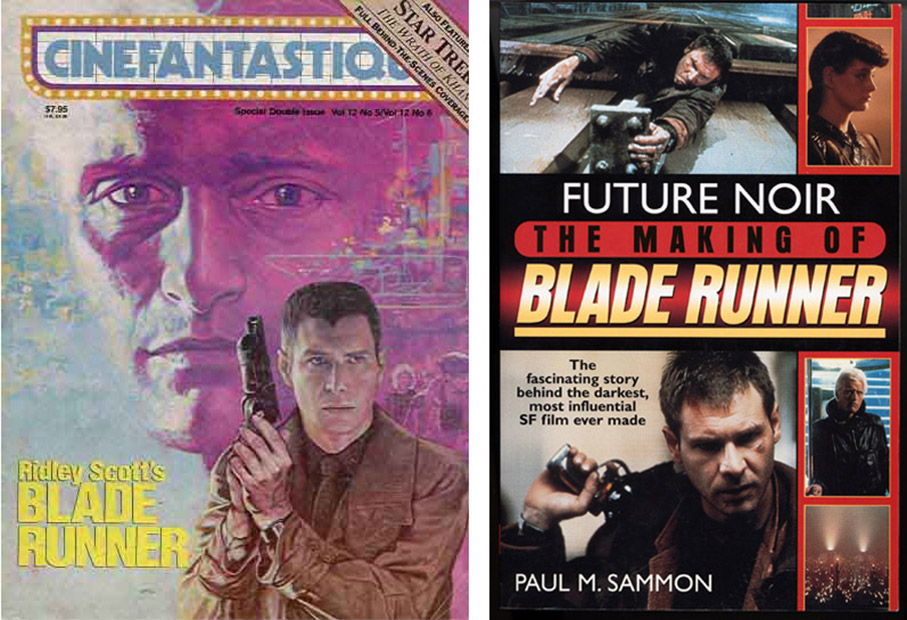
Just two more things to mention. On an irregular basis, Clarke made the decision to publish double issues. Yes, this meant that if you were or weren't interested in the covered subject, you were still stuck waiting twice as long for the next issue regardless. But even if the double issue was on a topic you knew nothing about, that state of ignorance didn't last very long. Writer Paul M. Sammon spent a lot of time on the Blade Runner shoot and so is a unique commentator on this classic but difficult film. His brilliant Cinefantastique article mutated into a book, the go-to reference tome for fans of the movie. What Cinefantastique contributed to the knowledge of genre film during its time cannot be underestimated. The fact that this information is housed between soft, glossy covers and not held captive by stiff hardback jackets is immaterial. The information is there and to keepers of the flame, it will always be there to dip in and out of, like a time traveller's movie menu taking you back to the 'when' of a favourite movie's production like no other publication.
Secondly, and in a somewhat self-serving aspect, I saw Jurassic Park: The Lost World way back when. It was the first movie I'd seen where I was made all too aware that its origins were "What do we think people want to see?" and not "We have a great story for you!" I've since christened this way of filmmaking, 'The Mission Impossible Syndrome'. Plan your action sequences first and then make up any old shit so that the action hangs together any old way. So story has its cojones roundly whipped by spectacle. The third Park and effortlessly superior film at least had a relatable human narrative and the Jurassic World movie had a few moments of fun. But the direct sequel was a string of disconnected fairy lights, scenes that the filmmakers believed we were all rabid to see. It was to be the first Steven Spielberg film I actually booed. That last shot... Jesus. Imagine my utter joy having my opinions printed in an issue of Cinefantastique circa 1998. Clarke was still in charge then and it warms the cockles of my heart to realise that he gave me the green light. For one brief, shining moment I was a Cinefantastique writer and it doesn't get a great deal better than that.

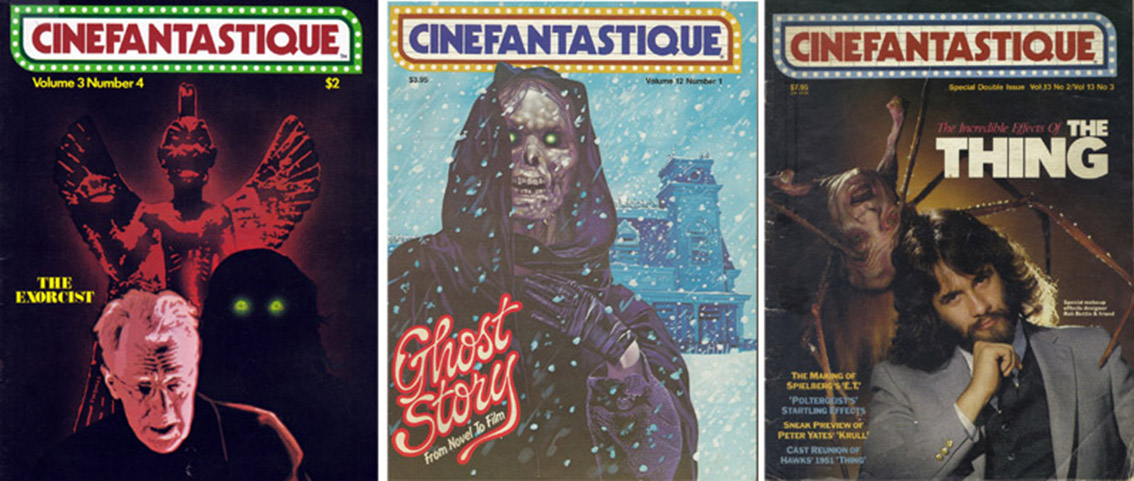
* http://thetruthinsidethelie.blogspot.co.uk/2014/02/a-look-at-some-vintage-issues-of.html
** Now, I thought I made up the word 'Desiree' (one who desires, naturally) but it seems that with a capital letter, this means a pink skinned potato with waxy flesh. Learning, learning, learning...
|